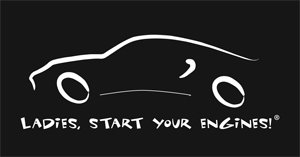The automotive market has long been seen as a male dominated industry. Men design the vehicles, produce and drive them. For many years little thought has been put into the idea of how this affects women and whether it matters. However, with more women in the work force, not only do they have the money to purchase their own vehicles, they are becoming a large portion of consumers of which should not be ignored. Women have long been alienated by the automotive industry and only in recent years have studies been done to assess how much.
Over the years one thing remains clear, women are not taught about maintaining their vehicles like men are. If we go back to the days when women attended home economic classes while men had shop and automotive, it is clear that the intentions were that car maintenance was men’s work. There are even some who believe that women do not have the capability to learn this technology. The unfortunate problem with this belief is that women drive cars, cars break down and they need to understand at least a little bit about them. Everyone needs to at least have an understanding of the language and how to communicate as an informed consumer about their vehicle, yet we continue to teach the boys and not the girls.
The automotive industry has largely been catering to a male audience with little to no acknowledgment that women today have much more buying influence. While some progress has been made to include women, there is still a long way to go. The automotive shops need to be a place where women can feel comfortable to come in, ask questions and be treated with respect no matter what their knowledge base. Until this happens, the automotive industry will continue to alienate a large group of the consumer population. Why should this matter to them? Because women purchase over 50% of all new cars and 48% of used cars, and they influence 80% of all auto purchases and repair decisions (Road & Travel Magazine).
Women really just want to be heard and taken seriously. They are just as concerned as the men are about what type of work needs to be done to their vehicles and why it is important. My goal, when I started Ladies, Start Your Engines, was to give women a safe place to learn and ask questions about their vehicles. It also offers a chance for the shops that hire me to show that they are concerned with what women want and that they are interested in offering them this type of service. It is not easy to win women over. It will take some work, because they want their questions answered in a way that makes them feel comfortable. They want to understand why the work is being done and not given the line “it’s too technical for you to understand”.
Ladies, Start Your Engines is a light maintenance class for women, taught by a woman. In 2 hours I try to give them the basic understanding of how their vehicle operates, the importance of proper maintenance and the language they need to understand so that they know what their service person is trying to tell them. I want to create a confidence in them to ask questions and not to think that any question is dumb. I explain to them that there are just as many men who do not know about their vehicles, they just act like they do or they ask questions.
So what can your shop or dealership do to attract more female customers and keep the ones you do have.
- Take a look at your waiting area. Is it clean? Are the chairs comfortable to sit in for more than 5 minutes? Do you offer free WiFi and coffee?
These might seem like simple things to you, but put yourself in the place of the customer. Women are not going to sit in a dirty area where they can overhear the technicians talking and laughing out in the shop. They may even have to bring a child with them, do you have something to attract their attention? I’m not saying that you have to spend thousands of dollars to fix up your waiting area, but make it a place that you would want to sit for at least a half hour. If you have a TV, it is best to have the volume turned off and run closed captioning on the screen. People who read or bring work to do will not want to have to listen to a loud television playing in the background.
- Stick your head in the women’s bathroom. This is something else that women complain about in service waiting areas. You should keep this bathroom spotless. Make sure that all the dispensers are full, trash cans are emptied every night and that you offer some type of changing area for babies. More and more men’s rooms have these as well. Many times you may have customers come in for a quick oil change and then they head off to work. They want to stay clean and they expect your bathrooms to be clean as well.
- Is there signage that directs people where to go when they come in for service? If women are already apprehensive about coming to your shop, not knowing what to do or where to go may just make them keep driving by. It is always best to acknowledge the customers when they come in so that they know you have seen them. Even a simple “Good Morning” let’s them know that you know they’re there and you’ll get to them as soon as you can. Remember, the customer in front of you is your most important client. If the phones are busy in the morning, have someone who is not working the desk answer them. The customer in front of you is already there and willing to spend money, make sure you are courteous and listen to their needs. Women especially want to make sure that you understand what they need and expect an explanation of what is being done. Just telling them it is time for a 30,000 mile service is not enough. They want to understand what is involved in this type of service. It is never a bad idea to do a quick walk around with each customer to make sure you understand their concerns. If you think you do not have time for this, think about how much more time you will have when they do not come back.
- Call your customers. Women want to know the status on their vehicles. Guessing that the work is finished at the end of the day and finding out it is not, will only create an angry customer. Remember that many women are working moms who have very busy schedules. They would rather know up front if you need the vehicle longer than to find out once they arrive at your shop.
- Show them what needs to be done. They say a picture is worth a thousand words, and in this case it solidifies with your customers what you are telling them. I cannot tell you how many women have told me that they are not taken out to see their vehicles because they are told that customers are not allowed in the shop. Be forewarned, that I am telling them this is not true. I took customers in the shop all the time. What better way to explain why the brakes need to be replaced than by showing them. I always tell women that if the service writer will not show you what you want to see on your vehicle, take it someplace else. You may only have to take them out into the shop a few times and then they will begin to trust you to do the work according to what you say is the problem. Many women feel they are being lied to when no one is willing to explain why a service needs to be done, do not let yourself fall into that trap.
From my experience as a technician, a service manager and a female, I can tell you that one of the biggest obstacles you will face is gaining their trust. Once you do though, they will be your most loyal customers. They will talk to their friends and recommend you. If you treat them poorly, they will not return and they will tell more people about their experience. One of the reasons I chose this profession was for the opportunities that would always be available. People will always drive cars and they will always need someone to fix them. In many ways, those who do not know much about their vehicles are at the mercy of the service shops. With more and more choices of where to go, women are asking their friends and choosing places where they feel comfortable and feel they are being treated fairly.
I always tell the women to read their owners manual, understand their maintenance schedule and to not be afraid to check their fuses or change a bulb. This simple encouragement empowers them to be more pro-active with their vehicles. Having brochures about your different services allows them to read about the service long before they need it and to formulate questions they may not think to ask when the service is being written up. It is also not a bad idea to have women working in your service or parts departments. This often makes women feel more welcome in your shop. When I was a service manager, many of the female customers would come to me to ask simple questions that they did not feel comfortable asking the men. Many times I would go with them to their service writers and make sure that they were comfortable working together and then they would no longer need me as much.
I cannot stress enough how important the first impression of your shop is to most female consumers. If the place is dirty, technicians are fooling around at the desk, the bathrooms are not clean and no one acknowledges them when they first come in, it will probably be their last visit to your facility. I have found that women are eager to learn about their vehicles if they are just given a chance. You can try offering an information session just for women at your own shop. Ask your female customers to bring their friends, let everyone know that you are female friendly and that you are willing to go that extra mile to produce a happy customer. For many of us, at the end of the day it is not just about the work, but about the people we help. If you were not interested in working with people, you would not be in this business. I remember when I was a technician, going home at the end of the day feeling a sense of accomplishment. I get that now every time I teach a class. I enjoy being able to give back and often times get hugs from the women who take my classes. I cannot think of a better way to judge my success than that!
Lori










